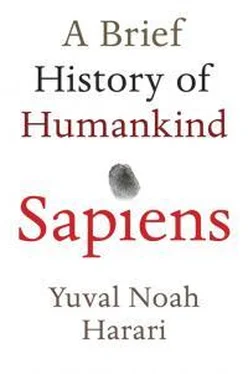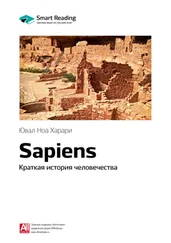Ten years after Cortés landed in Mexico, Pizarro arrived on the shore of the Inca Empire. He had far fewer soldiers than Cortés – his expedition numbered just 168 men! Yet Pizarro benefited from all the knowledge and experience gained in previous invasions. The Inca, in contrast, knew nothing about the fate of the Aztecs. Pizarro plagiarised Cortés. He declared himself a peaceful emissary from the king of Spain, invited the Inca ruler, Atahualpa, to a diplomatic interview, and then kidnapped him. Pizarro proceeded to conquer the paralysed empire with the help of local allies. If the subject peoples of the Inca Empire had known the fate of the inhabitants of Mexico, they would not have thrown in their lot with the invaders. But they did not know.
The native peoples of America were not the only ones to pay a heavy price for their parochial outlook. The great empires of Asia – the Ottoman, the Safavid, the Mughal and the Chinese – very quickly heard that the Europeans had discovered something big. Yet they displayed little interest in these discoveries. They continued to believe that the world revolved around Asia, and made no attempt to compete with the Europeans for control of America or of the new ocean lanes in the Atlantic and the Pacific. Even puny European kingdoms such as Scotland and Denmark sent a few explore-and-conquer expeditions to America, but not one expedition of either exploration or conquest was ever sent to America from the Islamic world, India or China. The first non-European power that tried to send a military expedition to America was Japan. That happened in June 1942, when a Japanese expedition conquered Kiska and Attu, two small islands off the Alaskan coast, capturing in the process ten US soldiers and a dog. The Japanese never got any closer to the mainland.
It is hard to argue that the Ottomans or Chinese were too far away, or that they lacked the technological, economic or military wherewithal. The resources that sent Zheng He from China to East Africa in the 1420S should have been enough to reach America. The Chinese just weren’t interested. The first Chinese world map to show America was not issued until 1602 – and then by a European missionary!
For 300 years, Europeans enjoyed undisputed mastery in America and Oceania, in the Atlantic and the Pacific. The only significant struggles in those regions were between different European powers. The wealth and resources accumulated by the Europeans eventually enabled them to invade Asia too, defeat its empires, and divide it among themselves. When the Ottomans, Persians, Indians and Chinese woke up and began paying attention, it was too late.
Only in the twentieth century did non-European cultures adopt a truly global vision. This was one of the crucial factors that led to the collapse of European hegemony. Thus in the Algerian War of Independence (1954–62), Algerian guerrillas defeated a French army with an overwhelming numerical, technological and economic advantage. The Algerians prevailed because they were supported by a global anti-colonial network, and because they worked out how to harness the world’s media to their cause – as well as public opinion in France itself. The defeat that little North Vietnam inflicted on the American colossus was based on a similar strategy. These guerrilla forces showed that even superpowers could be defeated if a local struggle became a global cause. It is interesting to contemplate what might have happened had Montezuma been able to manipulate public opinion in Spain and gain assistance from one of Spain’s rivals – Portugal, France or the Ottoman Empire.
Rare Spiders and Forgotten Scripts
Modern science and modern empires were motivated by the restless feeling that perhaps something important awaited beyond the horizon – something they had better explore and master. Yet the connection between science and empire went much deeper. Not just the motivation, but also the practices of empire-builders were entangled with those of scientists. For modern Europeans, building an empire was a scientific project, while setting up a scientific discipline was an imperial project.
When the Muslims conquered India, they did not bring along archaeologists to systematically study Indian history, anthropologists to study Indian cultures, geologists to study Indian soils, or zoologists to study Indian fauna. When the British conquered India, they did all of these things. On 10 April 1802 the Great Survey of India was launched. It lasted sixty years. With the help of tens of thousands of native labourers, scholars and guides, the British carefully mapped the whole of India, marking borders, measuring distances, and even calculating for the first time the exact height of Mount Everest and the other Himalayan peaks. The British explored the military resources of Indian provinces and the location of their gold mines, but they also took the trouble to collect information about rare Indian spiders, to catalogue colourful butterflies, to trace the ancient origins of extinct Indian languages, and to dig up forgotten ruins.
Mohenjo-daro was one of the chief cities of the Indus Valley civilisation, which flourished in the third millennium BC and was destroyed around 1900 BC. None of India’s pre-British rulers – neither the Mauryas, nor the Guptas, nor the Delhi sultans, nor the great Mughals – had given the ruins a second glance. But a British archaeological survey took notice of the site in 1922. A British team then excavated it, and discovered the first great civilisation of India, which no Indian had been aware of.
Another telling example of British scientific curiosity was the deciphering of cuneiform script. This was the main script used throughout the Middle East for close to 3,000 years, but the last person able to read it probably died sometime in the early first millennium AD. Since then, inhabitants of the region frequently encountered cuneiform inscriptions on monuments, steles, ancient ruins and broken pots. But they had no idea how to read the weird, angular scratches and, as far as we know, they never tried. Cuneiform came to the attention of Europeans in 1618, when the Spanish ambassador in Persia went sightseeing in the ruins of ancient Persepolis, where he saw inscriptions that nobody could explain to him. News of the unknown script spread among European savants and piqued their curiosity. In 1657 European scholars published the first transcription of a cuneiform text from Persepolis. More and more transcriptions followed, and for close to two centuries scholars in the West tried to decipher them. None succeeded.
In the 1830s, a British officer named Henry Rawlinson was sent to Persia to help the shah train his army in the European style. In his spare time Rawlinson travelled around Persia and one day he was led by local guides to a cliff in the Zagros Mountains and shown the huge Behistun Inscription. About fifteen metres high and twenty-five metres wide, it had been etched high up on the cliff face on the command of King Darius I sometime around 500 BC. It was written in cuneiform script in three languages: Old Persian, Elamite and Babylonian. The inscription was well known to the local population, but nobody could read it. Rawlinson became convinced that if he could decipher the writing it would enable him and other scholars to read the numerous inscriptions and texts that were at the time being discovered all over the Middle East, opening a door into an ancient and forgotten world.
The first step in deciphering the lettering was to produce an accurate transcription that could be sent back to Europe. Rawlinson defied death to do so, scaling the steep cliff to copy the strange letters. He hired several locals to help him, most notably a Kurdish boy who climbed to the most inaccessible parts of the cliff in order to copy the upper portion of the inscription. In 1847 the project was completed, and a full and accurate copy was sent to Europe.
Читать дальше



![Юваль Ной Харари - Sapiens. Краткая история человечества [litres]](/books/34310/yuval-noj-harari-sapiens-kratkaya-istoriya-cheloveche-thumb.webp)





![Юваль Ной Харари - 21 урок для XXI века [Версия с комментированными отличиями перевода]](/books/412481/yuval-noj-harari-21-urok-dlya-xxi-veka-versiya-s-ko-thumb.webp)


